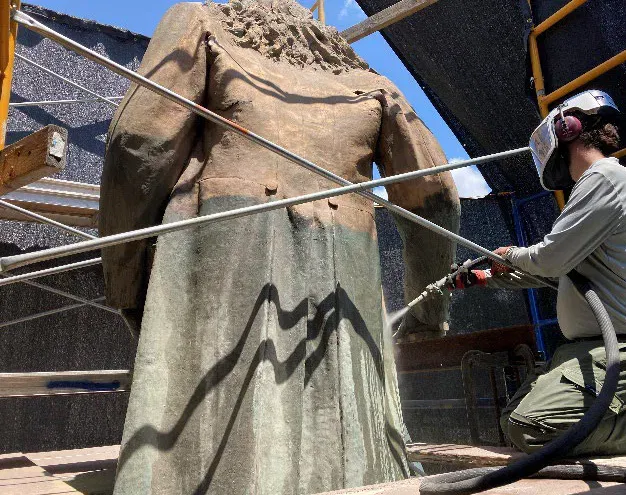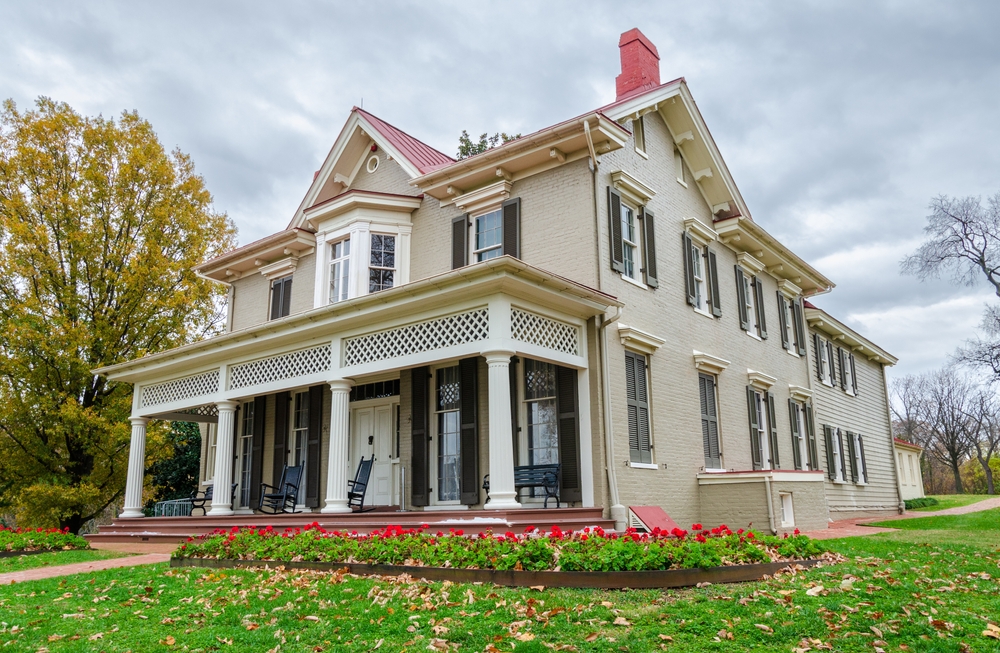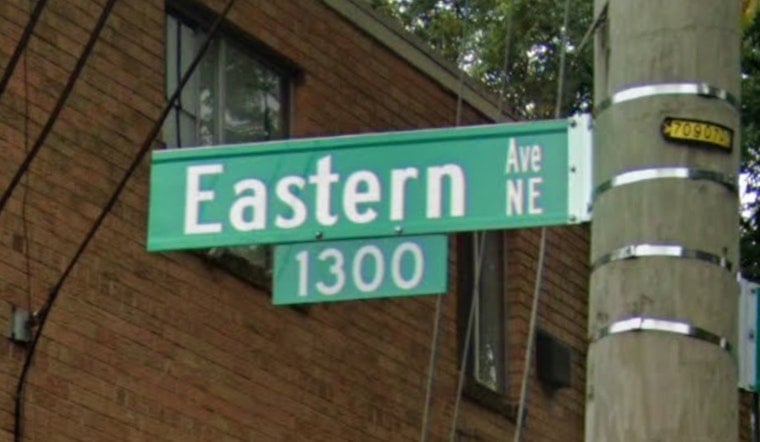WASHINGTON, D.C. – The National Park Service (NPS) has announced plans to restore and reinstall the statue of Confederate General Albert Pike in Washington, D.C., by October 2025, reigniting controversy around Confederate symbols in public spaces.
The statue, once the only Confederate monument in the nation’s capital, was toppled and set ablaze by protesters in June 2020 during nationwide demonstrations against police brutality and systemic racism. The 27-foot-tall bronze and marble structure had stood in Judiciary Square, near the headquarters of the Metropolitan Police Department.
Restoration Underway
According to the NPS, the statue has been kept in secure storage since its removal and is currently undergoing restoration. The process includes micro-abrasive cleaning to remove layers of corrosion and paint caused by the vandalism. In addition, crews will repair the damaged plinth, fixing stone breaks, mortar joints, and mounting elements.
NPS clarified that the monument honors Pike’s Freemasonry leadership, not his military service for the Confederacy. Pike served as Sovereign Grand Commander of the Ancient Rite of Scottish Freemasonry for 32 years until his death in 1891.
A Federal Directive
The decision to reinstall the statue follows President Donald Trump’s executive orders on “Making the District of Columbia Safe and Beautiful” and “Restoring Truth and Sanity to American History.” These orders seek to protect and restore historical monuments removed or defaced during social justice protests.
Pike’s role in the Civil War involved oversight of Native American territories. Though widely known for his post-war influence in Freemasonry, his Confederate past and controversial legacy have made the monument a frequent target of criticism.
Strong Opposition From City Leaders
D.C. Congresswoman Eleanor Holmes Norton, a longtime advocate for removing Confederate symbols from public spaces, condemned the decision and vowed to reintroduce her bill to permanently remove and relocate the statue.
“The decision to honor Albert Pike by reinstalling the Pike statue is as odd and indefensible as it is morally objectionable,” Norton said in a statement Monday. “A statue honoring a racist and a traitor has no place on the streets of D.C.”
Norton highlighted Pike’s troubled military legacy, noting he was accused of misappropriating funds, resigned in disgrace, and was imprisoned by his own troops during the Civil War. She believes the statue belongs in a museum—not a public park where it implies reverence.
Norton first introduced legislation to remove the statue in 2021, a year after it was torn down. Despite city leaders repeatedly requesting its permanent removal, Congress retains control over federal monuments in the District of Columbia.
Public Debate Reignites
The statue’s original installation was spearheaded by Freemasons in the late 1800s, but when public pressure mounted in 2017 to remove it, neither the Masonic groups nor Pike’s home state of Arkansas stepped forward to claim it.
In recent years, Pike has also been linked—though not conclusively—to the early Ku Klux Klan, a claim denied by Freemasons and found unsubstantiated by historians.
The decision to reinstall the Pike statue reflects a broader movement by some institutions to restore symbols removed in the wake of racial justice protests. In May 2024, the Shenandoah County School Board reinstated Confederate general names to several schools, a decision that has prompted legal action from the NAACP.
What’s Next?
As of now, the statue is expected to return to its original location in Judiciary Square by fall 2025. However, mounting political pressure and legislative efforts from leaders like Norton could block or redirect the reinstallation before that date.
Norton’s reintroduced bill would authorize the Secretary of the Interior to transfer the statue to a museum or nonprofit organization better suited to contextualize Pike’s legacy.
“Even those who want Confederate statues to remain standing would have to justify awarding Pike any honor, considering his history,” Norton added. “This is a moment to choose truth and accountability over sanitized nostalgia.”
Final Word
As the restoration continues, the debate over Confederate imagery—and the symbols we choose to honor—remains a flashpoint in the nation’s broader reckoning with history and racial justice. Whether Pike’s statue returns to public view or is ultimately relocated, its journey reflects a deeper conflict over how we remember the past—and who gets to decide.

















Leave a Reply